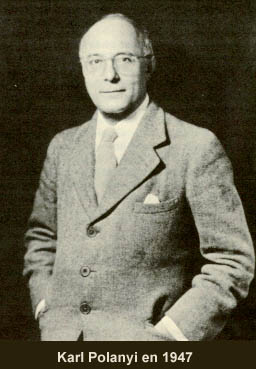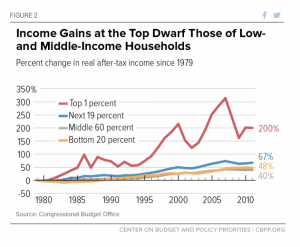The Origins of Totalitarianism Part 4: Humanity under Totalitarianism
Previous posts in this series:
The Origins of Totalitarianism Part 1: Introduction.
The Origins of Totalitarianism Part 2: Antisemitism
The Origins of Totalitarianism: Interlude on the Tea Party
The Origins of Totalitarianism Part 3: Superfluous Capital and Superfluous People
The Origins of Totalitarianism: Interlude on The Commons
Capitalism Versus The Social Commons
========
Please note: the last post in this series was published at Naked Capitalism. It tries to explain privatization in terms of the forces that produced imperialism, and discusses Rosa Luxemburg’s ideas.
========
In Part 3 of The Origins of Totalitarianism Arendt takes up Totalitarianism. She starts with the nature of people who succumb to a totalitarian movement. She distinguishes a totalitarian movement from a totalitarian state; the latter is a nation in which the totalitarian movement has taken over a nation and is functioning as the state. The leaders of totalitarian movements have enormous popular support in large part because they are charismatic people.
Totalitarian movements recruit support among the masses, a concept I take up in Part 3 of this series. The masses are superfluous people. They come from all classes, from the lowest to the highest. They have one thing in common: they stand outside the society, because they are not needed for any productive purpose, and do not participate in government or any other social institution. They have no identifiable common interests, in particular, no common economic interests.
Arendt says that democracies stand on two assumptions. First, people are involved with policy issues and participate in government. If they do not participate, it’s because they believe that there is an organized party or an institution that represents their views in the decision-making process. Second, the people who do not participate for some other reason are an irrelevant minority. Organized parties do not reach out to the non-participants, or try to recruit them. In the 1920s the number of non-participants grew rapidly, partly because a number of people were not needed for production and lost their sense of belonging, which is a precondition to participation; and partly because many ended their participation when they realized that their views were not in fact represented by the existing parties.
Totalitarian movements recruit among non-participants. Because they are not organized by economic or other interests, it isn’t necessary to use reasoned arguments to recruit them. A leader can emerge who expresses their fleeting passions and any prejudices or foolish ideas they share, or state some new idea with such fervor that it becomes a firm belief, without regard to reality. Suddenly that leader emerges at the head of a very large, very loud and often violent group, suddenly organized seemingly from nowhere.
Though they came from all classes, the masses shared the belief that
… the most respected, articulate and representative members of the community were fools and that all the powers that be were not so much evil as they were equally stupid and fraudulent. P. 315.
The number of non-participants in Germany and Austria increased enormously in the wake of the defeat in WWI and the hyperinflation of Weimar, and the breakdowns in production that gave rise to high unemployment. The fact that this displacement from their role in society happened to many people at the same time did not stop individuals from judging themselves harshly, from blaming themselves. Arendt says that gradually these people lost interest in their own well-being, their sense of self-preservation. They put a bunch of abstract ideas ahead of their own well-being, their own interests.
Himmler, who knew so well the mentality of those whom he organized, described not only his SS-men, but the large strata from which he recruited them, when he said they were not interested in “everyday problems” but only “in ideological questions of importance for decades and centuries, so that the man … knows he is working for a great task which occurs but once in 2,000 years.” The gigantic massing of individuals produced a mentality which, like Cecil Rhodes some forty years before, thought in continents and felt in centuries. Page 316, fn omitted.
The key to understanding the role of the individual in a totalitarian movements is this:
Totalitarian movements are mass organizations of atomized, isolated individuals. Compared with all other parties and movements, their most conspicuous external characteristic is their demand for total, unrestricted, unconditional, and unalterable loyalty of the individual member. This demand is made by the leaders of totalitarian movements even before they seize power. It usually precedes the total organization of the country under their actual rule and it follows from the claim of their ideologies that their organization will encompass, in due course, the entire human race.
The totalitarian movement demands absolute loyalty, and cannot bear any ties other than to the movement. It cannot abide any other claims on the loyalty or the feelings of people under its control, whether to institutions or to other people, even families.
The characteristics of people caught up in a totalitarian movement fit the needs of the movement.
1. They are separated from their society and have no close social relations outside their families.
2. They are not members of any organized party, and frequently have never participated actively in any political action.
3. They are alienated from the political structures of their society, and specifically, they believe that the politicians and other authority figures in power are frauds and incompetents, and that these leaders are the cause of their situation.
4. They respond to the charisma of the leader of the totalitarian movement.
5. They have lost their sense of self-preservation, and their sense of their own interests, substituting abstract issues and intense loyalty to the charismatic leader.
The usual explanation of the rise of Trump and Cruz given by the center-left is that a large number of US citizens have strong authoritarian streaks, that they like the idea of a strong man willing to take on the burden of governance and lead the US back to greatness, whatever that means to them. I think a lot of people leap from this idea to the idea that authoritarianism is a short step from fascism, and then they conclude that Trump represents a sort of proto-fascist smovement. Arendt gives us a broader way of thinking about our right wing problems.



